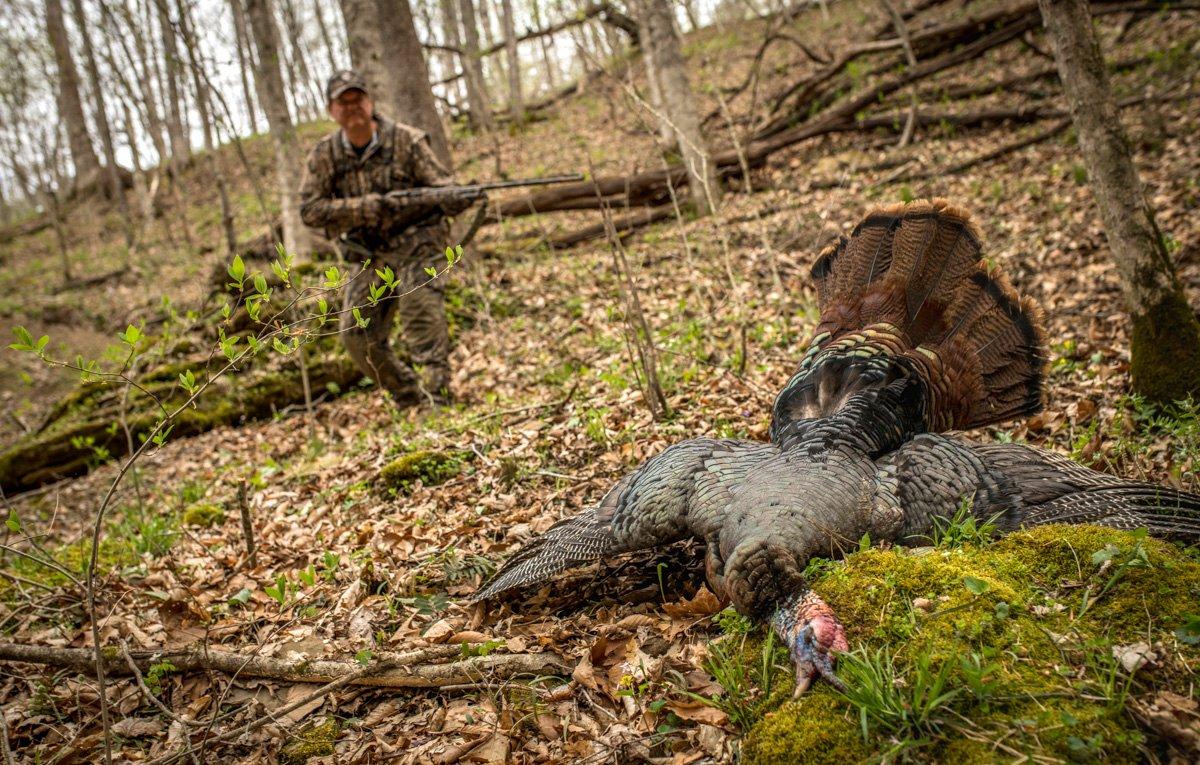Sometimes the best way to tag a tough gobbler is to give him a dose of silence, and wait
I love calling turkeys as much as the next hunter, but you have to know when to shut up. Because selective silence can kill gobblers too. In these four scenarios, keeping the calls in your pocket can be your best play.
1. Be Ready at the Roost
It sounds simple on paper. The gobblers you're chasing start the day, end the day and spend the night on the roost. Once you do their roost tree, set up nearby in the dark of morning. Don't move or call, or that turkey will focus on you without seeing a hen. Instead, sit silently and when your gobbler flies down and lands within range, kill him.
To find roosts, watch and listen hard at dawn and dusk. Gobbling is a primary spring roost indicator, and so is the flock talk calling they make as they approach favored locations.
Non-vocal noises can also help clue you in to roost locations. This includes feathers winging through tree branches and the sounds of turkeys landing. Check for fresh droppings underneath trees, too - piles of it will confirm that it's a frequently used tree.
Watch roosts and wait for turkeys to move in, then fly up. Hunt fly-down time at daybreak, and get as close as possible to the exact location where you saw birds fly up without spooking them.
Repeat this each afternoon where it's legal (some states close shooting hours at midday or in the afternoon). If it's not legal to hunt, be sure to scout instead, and slip back to the roost early in the morning.
2. Single Out a Strutter
Starting at a favorite roost site, study the terrain nearby. Pattern spring flock movement, which hens often influence, and try to identify where gobblers are strutting during the day and gobbling for hens. Strut zones might include a wooded opening, a pasture rise, a patch of island no bigger than a putting green in the center of a gator-filled swamp, or even a dry creek bed bordered by prickly pear and live oaks.
This location is sometimes elevated, since gobblers need to be seen (and heard) to attract hens. The strut zone often provides an unbroken view of a wide area and an escape route - possibly wooded edge cover - nearby.
3. Find a Funnel
Now that you've identified several roost trees and strut zones, study maps for transition areas where you're hunting. Your goal is to isolate pinch points between those roost trees and strut zones.
Once you've done that, get out there and listen. Track birds as they move from a roost to the spots where gobblers strut, hens feed and they both breed. There's often a travel lane that spring flocks prefer when moving from one location to another. Set up nearby in range of game trails, wooded funnels or pasture pathways. Sometimes these turkey byways skirt rivers, small streams and even wetlands.
You use these funnel and travel-corridor strategies while you're deer hunting, right? Hunt turkeys the same way. Let the landscape define the hunt, and serve the gobbler right up to you.
4. Be a Gang Buster
Can't call spring gobblers away from live hens? Scatter them.
Find the morning roost and, while birds are still clustered on the branches, scare the turkeys in all directions. If you're trying to bust a flock later in the day - one that's out of range for shooting but close enough to rush and flush - intercept them by using the terrain to hide your approach.
In both cases of flock busting, watch where the gobblers go. Their escape route is likely the same path they will use as they return to where you ruined the party. Set up between the break site and where that turkey hustled away. Wait for that gobbler's return, but don't get too comfortable - it might happen fast.
In this scenario, making some subtle turkey sounds can help. Leaf scratching, soft clucking and lost yelping can pull a lonely post-scatter tom into range.
But waiting silently can, too.
Check out the latest video episodes of Realtree's Spring Thunder. Watch now.







